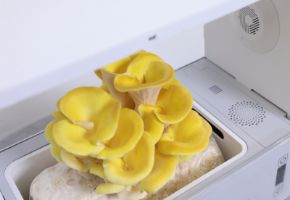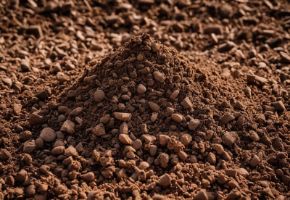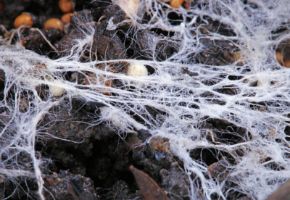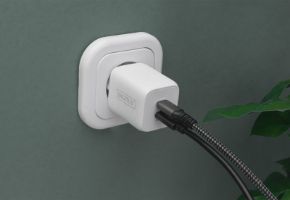In the world of acoustics, mycology, and sustainable design, a quiet revolution is taking shape. Mushrooms, long appreciated for their culinary and medicinal properties, are now proving to be extraordinary materials in the realm of sound. This article explores in depth how mycelium - the fungal vegetative network - is redefining the parameters of acoustic design, offering innovative, sustainable, and surprisingly effective solutions for sound management in architectural environments and beyond.
Acoustics and mycology
Before diving into specific acoustic applications, it's essential to understand the fundamental properties of fungi that make them ideal candidates for these innovative uses.
Mycelium: a living network
Mycelium represents the vegetative part of fungi, a complex network of filamentous hyphae that extends through the growth substrate. This biological structure, often overlooked in favor of the more conspicuous fruiting body, possesses unique physical properties that make it particularly suitable for acoustic applications.
The main characteristics that make mycelium interesting for acoustics include:
- Natural porous structure that absorbs sound waves
- Ability to grow into predetermined shapes
- Self-assembly into complex structures
- Vibration damping properties
- Variable and controllable density
Acoustic properties of Mycelial materials
Research has shown that mycelium-based materials exhibit sound absorption coefficients comparable to traditional materials, with the added advantage of being completely biodegradable and sustainable. The internal structure of mycelium grown under controlled conditions can be modified to optimize specific acoustic performances.
Sound absorption mechanisms
Mycelium operates through three main acoustic absorption mechanisms:
- Porous absorption: sound waves penetrate the structure and friction with cell walls dissipates energy
- Cavity resonance: micro-cavities act as Helmholtz resonators
- Viscous damping: the fibrous structure converts sound energy into heat
Research and development in Mycelial acoustics
Various institutions and design studios are exploring the potential of fungi in acoustics, with promising results that could redefine the future of space design.
The Mycelium research project by Snøhetta
The international studio Snøhetta has conducted pioneering research on mycelium for acoustic applications, demonstrating how this biological material can be grown into complex shapes suitable for sound control. Their approach combines mycological knowledge with architectural acoustic principles.
Key findings from their work include:
- Development of acoustic panels with NRC (Noise Reduction Coefficient) up to 0.75
- Creation of complex 3D structures combining diffusive and absorptive properties
- Growth substrate optimization for specific acoustic performances
Production process
The process developed by Snøhetta involves several key phases:
- Fungal strain selection: species with optimal structural characteristics are chosen
- Substrate preparation: organic materials like straw or sawdust are sterilized
- Inoculation: the substrate is colonized by mycelium
- Guided growth: mycelium is grown in molds designed to optimize acoustic properties
- Drying: the drying process stops growth and stabilizes the material
Other aignificant projects
Beyond Snøhetta's work, numerous other researchers and designers are exploring this emerging field:
Ecovative Design's MycoBoard
Ecovative Design has developed MycoBoard, a mycelium-based building material that shows excellent sound absorption properties. Their approach uses agricultural waste as substrate, transforming waste into high-performance materials.
MIT Media Lab's Fungarithms
MIT researchers have explored the use of algorithms to optimize mycelium growth for specific acoustic applications, creating structures that combine acoustic efficiency with organic aesthetics.
Advantages of fungal-based acoustic materials
Compared to traditional acoustic materials, mycelial solutions offer several significant advantages that go beyond mere technical performance.
Environmental sustainability
Mycelial materials represent a true revolution in acoustic design sustainability. Unlike synthetic petroleum-derived materials, fungi are completely biodegradable and can be grown with minimal environmental impact.
Key environmental benefits include:
- Carbon negative: the growth process sequesters CO2 from the atmosphere
- Use of agricultural waste as growth substrate
- Complete biodegradability at end of life cycle
- Low-energy production compared to traditional materials
Customization and adaptability
One of the most surprising features of mycelial materials is their ability to be "programmed" for specific acoustic needs through growth parameter control.
Acoustic property control
By varying different parameters during cultivation, acoustic performance can be directly influenced:
| Parameter | Effect on Acoustic Properties |
|---|---|
| Fungal species | Hyphae density and structure |
| Growth substrate | Material porosity and rigidity |
| Growth time | Thickness and compactness |
| Environmental conditions | Structure morphology |
Practical applications in architectural acoustics
From recording studio design to creating quieter public spaces, mycelial materials are finding increasingly varied real-world applications.
Sound-absorbing panels
Mycelium-based acoustic panels are emerging as an ecological alternative to traditional sound-absorbing materials. These panels can be grown in various shapes and thicknesses to suit different sound control needs.
Notable installations
- Philharmonie de Paris: testing mycelial panels in common areas
- Google Campus: experimental use in meeting rooms
- Scandinavian schools: pilot projects to improve classroom acoustics
Diffuser elements
Beyond absorption, mycelium can be grown into complex shapes that serve as effective acoustic diffusers, breaking sound waves to distribute energy evenly throughout a space.
Sound insulation
Mycelium's ability to grow into complex spaces makes it ideal for sound insulation applications in walls and floors, offering performance comparable to traditional materials with drastically reduced environmental impact.
Current challenges and limitations
Despite numerous advantages, widespread adoption of mycelial materials in acoustics must still overcome some significant challenges.
Durability and longevity
The long-term resistance of mycelial materials in variable environments remains an active research area. While prototypes show good initial performance, long-term stability in real-world conditions requires further verification.
Process standardization
The biological nature of mycelium introduces variability that can challenge large-scale production. Ensuring performance consistency between different production batches is crucial for commercial adoption.
Public perception
Overcoming skepticism toward "living" materials in construction and design represents a non-technical but significant barrier. Educating about the benefits and reliability of these solutions is integral to their future success.
Mycelial acoustics: a future perspective
With rapidly developing research, the potential of fungi in acoustics appears almost limitless, promising innovations that could radically transform our approach to sound design.
Hybrid materials
Combining mycelium with other natural or recycled materials could lead to hybrid solutions with superior performance. Preliminary research on mycelium-hemp or mycelium-wool composites shows promising results.
Active acoustics
Integrating living mycelium into dynamic acoustic systems could lead to solutions that actively adapt to environmental acoustic conditions, opening completely new possibilities in sound control.
Custom tailoring
With advances in algorithm-guided cultivation techniques, we might see the emergence of completely customized acoustic solutions for specific spaces, digitally optimized and then biologically "grown".
The evolution of sound management
The use of fungi in acoustics represents a fascinating intersection of biology, technology, and design. Mycelial materials offer a unique combination of acoustic performance, environmental sustainability, and creative potential rarely found in other contemporary solutions.
As research continues to evolve, it's clear that mycelium has the potential to redefine not only how we control sound in our spaces, but also how we conceive the relationship between built environments and natural systems. For mycology enthusiasts, this represents an exciting opportunity to see fungi take center stage in a completely new field, once again demonstrating the extraordinary versatility of these remarkable organisms.
For those wanting to explore mushroom cultivation for acoustic purposes, we recommend starting with robust species like Ganoderma lucidum or Pleurotus ostreatus, which have shown good structural properties in various studies. As always in mycology, controlled experimentation and accurate documentation are key to advancing in this emerging field.
The fungal kingdom is a universe in continuous evolution, with new scientific discoveries emerging every year about their extraordinary benefits for gut health and overall well-being. From now on, when you see a mushroom, you will no longer think only of its taste or appearance, but of all the therapeutic potential it holds in its fibers and bioactive compounds. ✉️ Stay connected - Subscribe to our newsletter to receive the latest studies on: Nature offers us extraordinary tools to take care of our health. Fungi, with their unique balance between nutrition and medicine, represent a fascinating frontier we are only beginning to explore. Continue to follow us to discover how these extraordinary organisms can transform your approach to well-being.Continue your journey into the world of fungi










